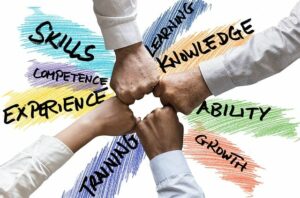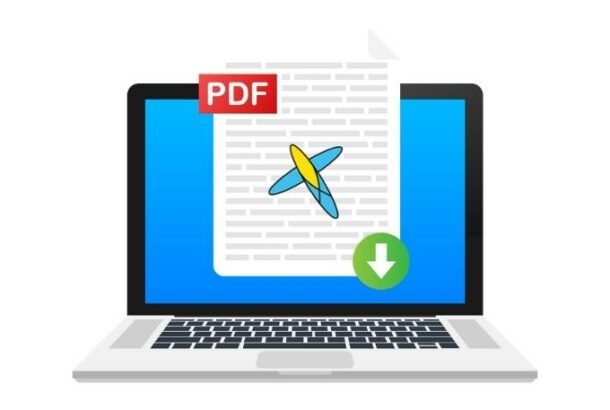The Role of Product Managers in Enterprise AI Transformation: Bridging Innovation and Leadership”
Introduction
Have you noticed how quickly technology is changing around us? One day it’s all about mobile apps, and the next, it’s AI this and AI that. If you’re in the thick of it, especially as a product manager, you know that AI is transforming enterprises faster than you can say “artificial intelligence.” But what does this mean for you and your role? Let’s see how product management has evolved and why adapting to AI-driven changes is crucial for staying relevant and leading effectively.
Historical Perspective: The Evolution of Management Roles
Pre – 1980 – Wild West (according to Krishna – diaper days)
Pre-Agile Era (1980-2000)
Back in the day, management roles were all about hierarchies and linear processes. Think of a pyramid structure where decisions flowed from the top down. Managers were the gatekeepers, ensuring that tasks were completed as per strict guidelines. Flexibility? Not so much. It was all about following a set plan and sticking to it, come what may.
This approach was effective as organisations were scaling. However, as more people joined, the processes became more complex, monolithic, and difficult to navigate.
Post-Agile Era (2000-Present)
Fast forward to the 2020s, and we saw a dramatic shift with the Agile movement. Now, it’s all about collaboration, flexibility, and putting the customer first. Managers transformed into facilitators, encouraging teams to work together, iterate quickly, and focus on delivering value. The rigidity of the past gave way to a more dynamic and responsive approach, which was essential for keeping up with rapid technological advancements. We even have a templated approach product development, still liner but iterative we have used Agile to bring change. The process is so ingrained in modern business practices that there is a dedicated industry association for it, called the Product Development and Management Association (PDMA).
The method for building products, whether large (like airliners) or small (like microprocessors), is through a stage-gate process called New Product Development (NPD). The steps in this process include:
- Idea Generation: Generating new product ideas through brainstorming and innovation.
- Idea Screening: Evaluating and filtering out the best ideas from the initial pool.
- Concept Development and Testing: Developing and testing product concepts for feasibility and market acceptance.
- Business Analysis: Analyzing the business potential and financial viability of the product.
- Beta and Market Testing: Testing the product in real market conditions with selected users.
- Technical Implementation: Developing the technical aspects and building the product.
- Commercialization: Launching the product in the market.
- New Product Pricing: Determining the pricing strategy for the new product.
The Current Landscape: AI and Its Impacts
Moore’s Law and Technological Advancements
Ever heard of Moore’s Law? Coined by Gordon Moore, co-founder of Intel, in 1965, it’s the observation that the number of transistors on a microchip doubles approximately every 18 months, leading to exponential growth in computing power. This has paved the way for incredible advancements in AI. Today, AI isn’t just a buzzword; it’s a tool that businesses leverage for everything from predicting customer behavior to automating routine tasks.
The new chips developed are now running 30 times faster while using half or even less energy, significantly enhancing the efficiency and capability of AI applications.
Artificial Intelligences and Access to AI
Artificial Intelligence is fundamentally machine learning, and machine learning is essentially a mathematical problem. However, the range and complexity of problems that machine learning can now solve are more advanced than ever before. The accessibility of this technology is expanding. Today, it’s easier to use and apply without needing extensive data science teams or vast amounts of data to achieve success.
DeepMind’s AlphaFold AI has revolutionized protein structure prediction, dramatically accelerating drug discovery and potentially transforming medicine. It has significantly shortened the time needed for protein sequencing from 6-12 years to predicting 290 protein structures in just 48 hours. This breakthrough has a profound positive impact on human health and scientific research.
In healthcare, AI is enhancing medical imaging, enabling earlier and more accurate detection of diseases like cancer, which leads to improved diagnoses and treatment outcomes, including conditions like ADHD.
In finance, AI algorithms analyze market trends and make data-driven investment decisions, potentially yielding higher returns for investors and contributing to greater financial stability.
In agriculture, AI analyzes data to produce record results, optimizing crop yields and resource use.
Generative AI is causing a visible shift in the rate of change. The implications are vast: every product we use daily, on any device, for any process at work or home, will incorporate some form of AI. This integration will reinvent products and processes, making them more efficient and automatic, thus freeing us to focus on higher-value tasks and problems.
AI as Copilot
AI copilots are poised to revolutionize various fields by providing advanced, accessible, and personalized support. Their integration is expected to lead to greater efficiency, lower costs, and enhanced customer experiences. Here are a few examples:
IBM Watson acts as a co-pilot for various industries, including healthcare, where it assists doctors by summarizing patient histories and providing insights based on vast datasets. This kind of AI application showcases the importance of having knowledgeable guides who can help teams leverage these tools effectively.
Salesforce Einstein AI designed to bring AI capabilities to various business functions, is another example, making it easier to integrate and customize AI solutions within the Salesforce ecosystem. The platform emphasizes data privacy and security while providing powerful tools to enhance productivity and customer engagement.
Companies like Gucci are using AI to personalize shopping experiences, offering recommendations tailored to individual preferences. By utilizing these AI capabilities, Gucci is able offer a more personalized, efficient, and engaging shopping experience, ultimately leading to increased customer satisfaction and loyalty.
In a similar vein, companies like Slack, Dropbox, and Zoom have embraced the “product-led” approach, where the product itself is the main driver of acquisition, expansion, and retention. These companies leverage AI to enhance user experience, automate customer support, and streamline workflows, making their products indispensable.
Each model release brings significant advancements, often rendering previous technologies obsolete and leading to a shift in the competitive landscape. Startups and established companies alike must continuously innovate to stay relevant.
The rise of synthetic data is a prime example of technological advancement driving innovation. Synthetic data, generated by AI algorithms, is increasingly being used to train machine learning models, especially when real-world data is scarce or sensitive. This approach accelerates the development process and reduces the risk of privacy violations.
One of the more intriguing developments in the AI field is the concept of synthetic CEOs. These AI-driven entities can make strategic decisions, manage operations, and even interact with stakeholders, based on vast amounts of data and sophisticated algorithms. While still in the experimental stage, synthetic CEOs represent the potential future of executive leadership, where AI augments or even replaces human decision-makers in certain scenarios.
Transitioning Roles: From Managers to Coaches
Talk about Canva and CEO and who we can tag-
Canva has taken an innovative approach by shifting from traditional management roles to coaching. Coaches at Canva don’t just tell people what to do; they guide, inspire, and foster a culture of continuous learning. This shift has been instrumental in Canva’s success, enabling them to stay agile and innovative.
How we helped our client in their Enterprise AI
To navigate the challenges and opportunities presented by AI at Sanria, we implemented a comprehensive coaching program focused on developing the necessary skills and strategies to successfully integrate AI into products and services. The initiative began with the leadership team and involved a customized cohort program designed to train 30 product managers and product owners over a three-month period. Participants attended bi-weekly, four-hour cohort sessions with groups of 6-8 people, followed by personalized 1-on-1 coaching sessions. This approach ensured that AI solutions aligned with business needs and provided significant value to end-users. The impact was substantial: participants enhanced their skills, increased productivity, and improved collaboration, resulting in higher quality products and increased cost savings for the organization.
The Role of Manager in AI Transformation
In the world of constant change, having a coach is invaluable. Coaches help teams navigate the complexities of AI integration, encouraging experimentation and innovation. They create an environment where team members feel empowered to learn and adapt, which is crucial for successfully implementing AI solutions.
Essential Skills for Modern Leaders
Driving AI transformation requires leaders and executives to possess a blend of technical, strategic, and interpersonal skills. These essential skills can be categorized into several key areas:
AI Literacy
First and foremost, understanding AI technologies and their applications is a must. You don’t need to be an AI expert, but having a solid grasp of how AI works and what it can do for your business is essential. Tools like ChatGPT, Gemini, and Perplexity AI can significantly reduce the time and effort required for various tasks, making it crucial for managers to stay updated on these technologies.
According to McKinsey, AI is expected to reduce our workload by 30 to 70%, which underscores the importance of AI literacy for modern leaders.
According to Harvard Business Review, leaders who are rated high in awareness, wisdom and compassion also excel at key AI-augmented leadership skills.
Data-Driven Decision Making
AI thrives on data. Modern leaders need to leverage AI for predictive analytics and customer insights, making informed decisions based on data rather than gut feeling. This data-driven approach is essential for staying competitive and delivering value.
Change Management
AI integration is a significant change, and leading teams through this transition requires agility and adaptability. Effective change management ensures that your team is on board and ready to embrace new technologies.
Narrative and Storytelling
Stories are powerful. Use them to connect with your team, inspire action, and drive change. A compelling narrative about the potential of AI can motivate your team to embrace and innovate with these new tools.
Strategies for Upskilling and Adapting
Upskilling and adapting are crucial strategies for individuals and organizations aiming to stay competitive and relevant in a rapidly changing environment. Here are key strategies to achieve effective upskilling and adaptation:
Coaching and Mentoring Programs
Consider implementing coaching cohorts or train-the-trainer initiatives. These programs can be incredibly effective in building internal capabilities and ensuring that everyone is up to speed with the latest AI technologies and methodologies.
Continuous Learning
Encourage your team to engage in ongoing education. Whether it’s through online courses, workshops, or conferences, continuous learning keeps everyone at the cutting edge of AI and Agile practices.
Real-World Applications
Start small with practical AI projects and gradually scale up. This approach allows your team to gain hands-on experience and build confidence in using AI tools and techniques.
Practical Tips for Leaders
Here are some practical tips to help you drive AI transformation successfully. Remember, you don’t have to do it alone. Connect with the Leadership Tribe to discuss your transformation roadmap and get the guidance you need.
Embrace AI Tools
Begin integrating AI tools into your workflow for routine tasks. This not only improves efficiency but also frees up time for more strategic initiatives.
Foster a Learning Culture
Promote a culture of curiosity and continuous improvement. Encourage your team to explore new ideas and experiment with AI solutions.
Leverage Data
Make data-driven decisions by integrating structured and unstructured data sources. AI can help you uncover insights that might not be apparent at first glance.
Engage with Stories
Use storytelling to communicate your vision for AI integration. A compelling narrative has the power to inspire and engage your team, encouraging them to support new initiatives.
For instance, a couple of weeks ago, I heard about new documentation software that utilizes generative AI to summarize a patient’s entire history. Doctors used to spend about 30 percent of their time reviewing historic charts before seeing a patient. With this software, they can now get comprehensive insights quickly, showcasing how AI can drastically improve efficiency and decision-making.
Conclusion
As we wrap up, it’s clear that the role of product managers is evolving in the face of AI transformation. Embracing this change and continuously learning is the key to leading effectively.
By fostering a culture of innovation and empathy, you can navigate the complexities of AI and drive your organization towards a successful future.







